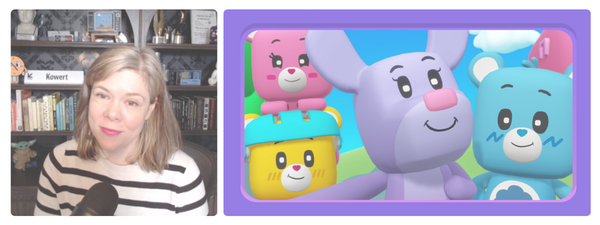Games don’t have to look like school to teach valuable lessons.
Math, science, and reading might be what first come to mind when we think of educational video games for kids. But digital play can also teach other critical elements, like confidence, curiosity, and other life skills.
If your kids already play digital games, this probably doesn’t surprise you.
Even at six in the morning, my six-year-old can beat a level on a game using more logic and critical thinking than I could ever imagine having before coffee. Some of the mental calculations he runs while building in Minecraft in the first five minutes of his day feel like more than I’ve done in the last year!
The point is, pretty much all games are inherently educational, even when they don’t seem like it. A game doesn’t need to have flashcards and curricular lessons to impart knowledge on kids and help them develop.
Intentional and Unintentional Learning
During lockdown, Animal Crossing taught one of my kids how to read. It doesn’t have voice acting, so they had to read everything. And they were doing math constantly — buying, selling, trading. Their reading and math got really good.
Think about kids’ video games as offering both intentional and unintentional learning. Intentional games might be like Math Tango, where the goal is to teach math. But games like Animal Crossing teach just as much — math, reading, problem-solving — even if they weren’t made for it.
Games are built around puzzles, reading, math, hand-eye coordination, and persisting through failure. Whether they’re teaching school subjects or life skills, intentionally or unintentionally, these digital experiences support real-life learning and development.
What Are Educational Games for Kids? A Spectrum of Learning Through Play
An educational video game is part of the larger category of edutainment (educational entertainment), or entertainment made with an explicit goal to teach something. That might be academic, a life skill, solving a specific problem, or covering a specific topic.
If you filter a game library by the educational category, you’ll see what I mean.
A more modern interpretation of the term could apply to nearly any game, as all games and other forms of play offer a learning opportunity. There’s no hard line between “educational” and not. It’s a spectrum of learning experiences and purpose.
Types of (Intentional Learning) Educational Games
There are different ways games teach, and they don’t all look the same:
- Edutainment (educational) games focus on drilling specific knowledge (like spelling or times tables) in a playful format, leveraging either active or passive screen time.
- Problem-solving games challenge kids to think critically, test hypotheses, and adapt through trial and error.
- Life-skill games teach kids how to manage emotions, follow routines, or collaborate with others — sometimes without ever calling it that.
Educational games cover both academic and developmental ground:
- Academic subjects: math, reading, science, history, geography
- Developmental skills: creativity, persistence, emotional regulation, cooperation, time management, hygiene
So, yes, a game like Endless Learning Academy or Math Tango is clearly educational. Still, I would also add Animal Crossing, Minecraft, and the rest of the handful of games not made explicitly for education to that list.
Intentionally educational games are a great tool to have in your toolbox. They are created and coded specifically for the purpose of teaching school subjects and “big kid” skills. The point here is that any game can be effective (sometimes even moreso), when they are unintentionally educational.
For instance, my daughter plays both Math Tango and Animal Crossing, but the latter was incredibly more effective in teaching her reading, math, and even social skills (primarily because she wanted to play it more on her own; to be clear I very much am a fan of Math Tango!).
Whatever they teach, using play as a vehicle for learning is the key to lasting, impactful lessons.
How Video Games Actually Teach: The Mechanics Behind the Learning
A well-designed video game for kids provides scaffolding they need to learn while progressing at their own pace and, critically, having fun. Some of the best-designed games can even adapt instantly to the player’s unique progress and challenges to help them understand where to go, what to do, and how to solve the next problem.

Games teach through doing, not just showing. They engage kids in feedback loops and enable a sort of self-guided learning that itself is nurturing curiosity and resilience. Learning is enhanced because of the structure — not (just) because the content is educational.
The most important elements in any game that teaches, intentionally or unintentionally, include:
- Trial and error: Kids learn by experimenting, failing, and trying again, without fear of consequence or social fallout.
- Growth mindset and persistence: Games reward effort and progress, encouraging kids to keep going even when it’s hard.
- Systems thinking: Many games require managing rules, patterns, or resources — helping kids understand how parts work together.
- Cause and effect: Actions have consequences. Games help kids connect their choices to outcomes.
- Collaboration and communication: Co-op play builds teamwork, turn-taking, and clear communication.
We can look at the concept of educational games through the 3D model.
3D: Decoration, Definition, Dimensional
While I developed this 3D model in my research focused on the representation of mental health in video games, it’s equally helpful in this context to recognize learning moments in kids’ games. Those 3 D’s include:
- Decoration: The visual environment, characters, worldbuilding (e.g., exploring a grocery store in a game helps with real-world familiarity)
- Definition: The learning content or message (e.g., a game made to teach math)
- Dimensional: The game mechanics that require learning (e.g., budgeting, cooperation, strategy)
With digital experiences, it’s all embedded in all layers, which is what makes it exceptionally valuable as a tool in our children’s educational and developmental arsenal. You’re learning in the set of it, in the aesthetic, in the gameplay mechanic.
Why Is Play Such a Good Teacher?
Play is really good at teaching us because we’re in a state of flow. Flow happens when the challenge of the game meets the skill of the player. It’s when we lock in, lose track of time, and become enveloped in the game as if it is an extension of our world.
When you’re in a state of flow, learning is enhanced — and you just want to keep playing. There’s zero resistance to the experience, just flow.
Even tried-and-true learning models like Montessori embrace structured, choice-driven experiences that mirror how many educational games work, balancing freedom with feedback.
What Makes a Game Educational: It’s Not Just the Subject Matter
When we think about what makes a game educational, it’s easy to focus on the content. But there’s more going on under the hood. Many of the most valuable games teach something else entirely: how to learn.
In psychology, we often talk about cognitive load: the mental effort required to process and respond to a task. Games that challenge attention, memory, flexibility, and self-control are teaching kids critical life skills, whether or not there’s a spelling word in sight.
They’re learning through the controls, the environment, the logic, and the pacing. They’re learning to adapt.
Games are especially good at building what we call executive functioning: the brain’s ability to manage time, regulate emotions, shift between tasks, and plan ahead. Think about what it takes to complete a level or solve a game puzzle. Kids are being asked to stay focused, try new strategies, remember patterns, and bounce back from mistakes. That’s executive function training.
We also see strong benefits in non-academic areas like:
- Creativity: Building, designing, imagining
- Persistence: Trying again after failure
- Emotional regulation: Staying calm and focused under pressure
- Resource management: Tracking tools, tokens, or progress
- Collaboration and communication: Working with others to reach a goal
- Decision-making: Choosing how to act, and learning from outcomes
- Knowing yourself: even discovering what types of challenges you enjoy (or avoid)
These are the kinds of skills that often fall into what we call the life preparedness gap — the space between what kids are expected to know and what they’re actually taught.
Examples of Educational Video Games for Kids (4–7)
While nearly all age-appropriate video games can be an educational experience for kids, having some intentionally educational games on hand is a smart move. These can help you get some extra value from screen time and give your kids ways to explore subjects they love and want more of.
You can’t go wrong with…
Endless Learning Academy
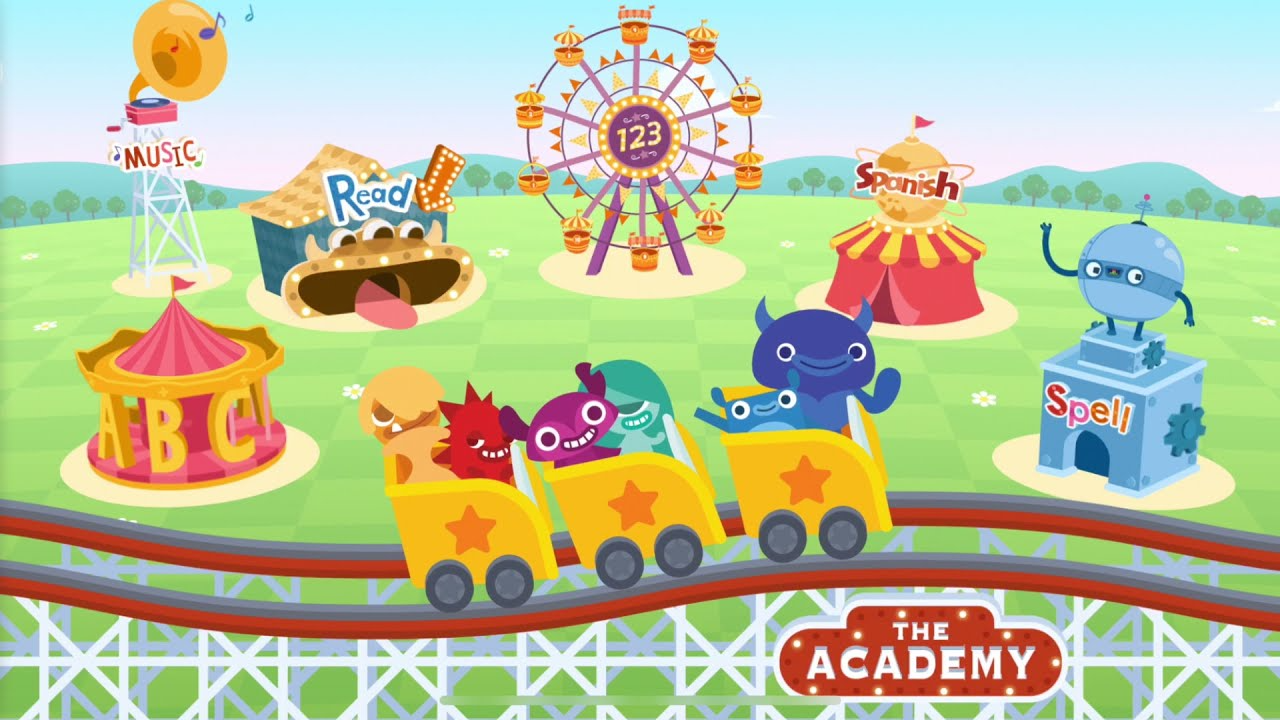
I absolutely love this game. It’s quirky, it’s cute, the design is great, and it nail a bunch of academic topics. It’s not even made for adults, yet I find it awesomely engaging. Endless Learning Academy teaches lots of different things — music, letters, reading. It teaches kids how to sound out letters, while remaining irresistibly fun.
Math Tango
Made by the same brains behind Endless Learning Academy, Math Tango focuses where you might expect. Addition, subtraction, multiplication, and division show up across a variety of fun, silly mini-games.
A game like this can be especially helpful for gifted kids with advanced math skills who need resources beyond the classroom to match — and challenge — their abilities.
Nurture
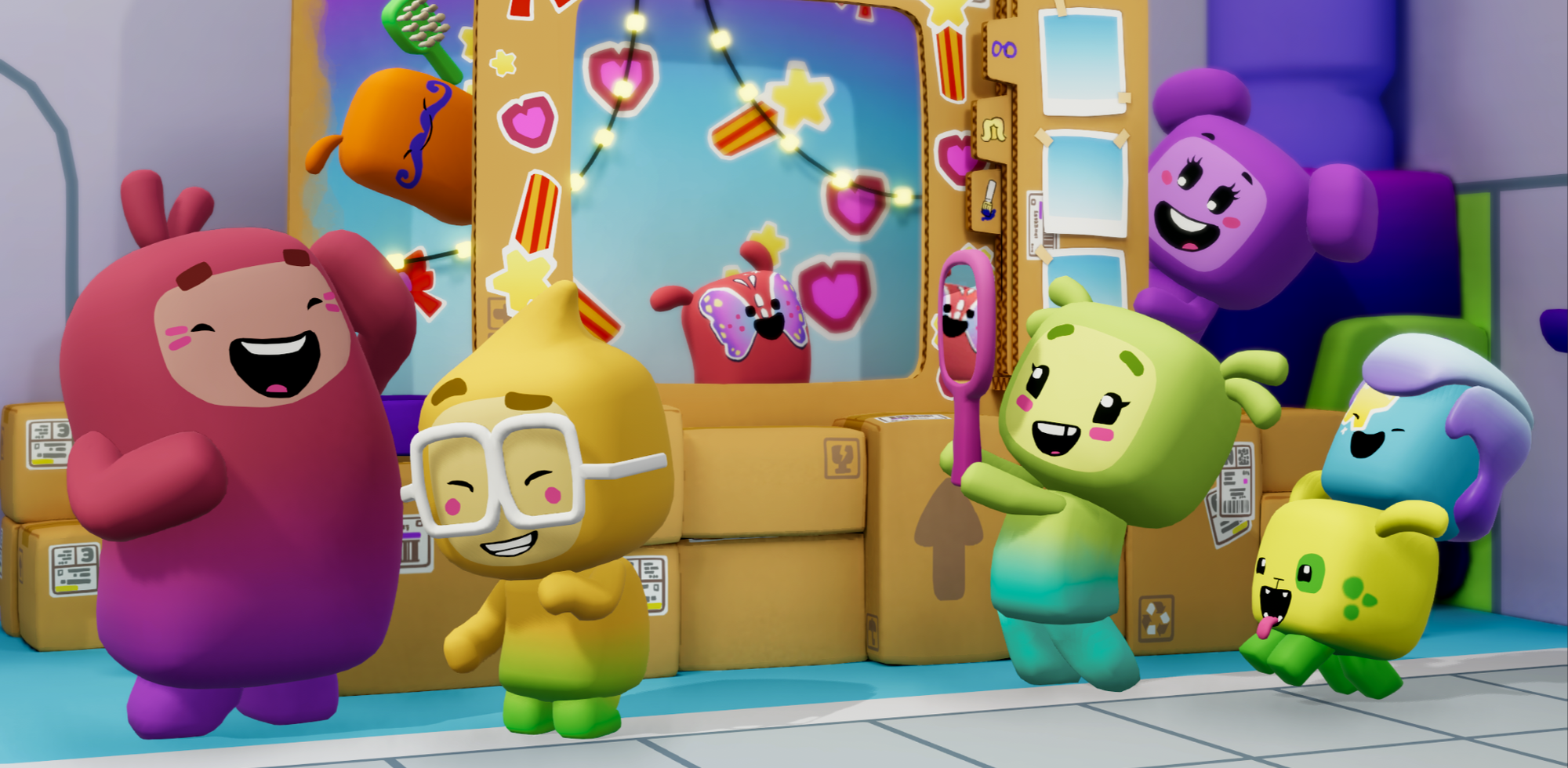
Of course, Nurture is my favorite kids game for teaching life skills — things like critical thinking and creativity, but also practical skills like financial literacy and healthy habits. In one Adventure, it’s all about putting the character to bed, exploring bedtime routines in a fun and playful way. We’ve all had bedtime struggles, so any help is appreciated!
Nurture also has a level devoted to budgeting, a skill that’s essential for life preparedness, but rarely taught in such a lasting, engaging way.
PBS KIDS Games
With its expansive library of characters and topics, PBS KIDS Games is a great choice for kids who always love finding something new. They might also like playing the characters they see on TV, helping add developmental and academic value to other screen time.
I love Daniel Tiger’s Bathrooms game (it helped all my kids potty train!) and we also love peg + cat math games. You’re likely to find one that fits the academic and developmental needs of your kids.
Minecraft
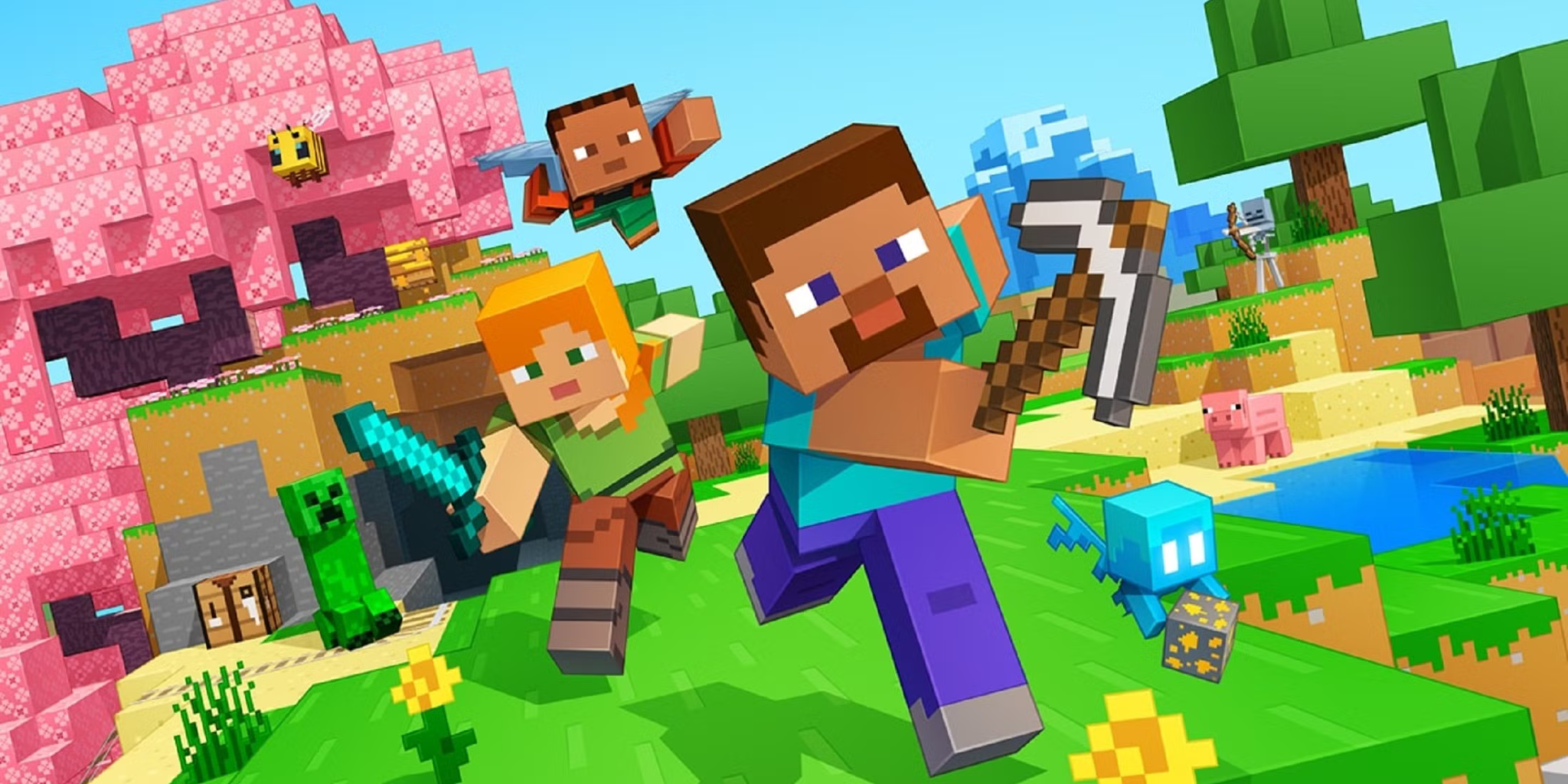
Minecraft might not look like an educational game at first glance — but that’s exactly the point. This is the perfect example of unintentional learning. Kids explore resource management, creative problem-solving, spatial reasoning, and even basic coding if they get into Redstone or mods.
It’s also one of the best games for systems thinking: kids see how elements interact, how rules can be bent or built upon, and how their decisions shape the world around them. And if you play in Creative Mode, younger kids can experiment freely without pressure.
Minecraft is a go-to in my house — not just because it’s fun, but because it’s endlessly rich with learning opportunities.
Kerbal Space Program
This one’s definitely better for the older end of the 4–7 range (or with some grown-up help), but it’s fantastic for STEM learning. Kerbal Space Program teaches real-world physics and engineering in a way that’s playful, accessible, and wildly fun.
Your child builds rockets and launches them — often failing hilariously before figuring out what works. The trial-and-error process is golden. It’s science through simulation, wrapped in a goofy, lovable package.
And yes, even when the rockets explode, there’s learning happening. Actually, especially then.
Is Educational Screen Time “Better”? What the Research Says
When we talk about screen time, it’s easy to fall into the trap of counting minutes instead of asking what’s actually happening on the screen. But in reality, not all screen time is created equal, and educational video games prove that point perfectly.
The difference comes down to the Three Cs:
- Content: What kind of media or gameplay is your child engaging with?
- Context: What’s happening around the screen? Is it active, passive, solo, social?
- Communication: Are you talking about it with them? Watching, playing, or reflecting together?
This framework helps parents move beyond screen time guilt and focus on what really supports learning, connection, and healthy development.
There’s passive screen time, like watching a show. Then there’s active, co-engaged screen time, where a child is making decisions, solving problems, or reflecting with a caregiver. Educational games fall into this second category, and they’re uniquely effective at teaching everything from emotional intelligence to executive functioning.
A 2024 meta-analysis in Frontiers in Psychology on early childhood game-based learning found that game-based learning had a moderate to large effect on cognitive, social, emotional, motivational, and engagement outcomes. That’s a big deal, especially when we’re talking about kids ages 4–7, a stage of development where play is such a big part of how they learn.
Digital media expert Dr. Kris Alexander makes a critical point in his TED Talk on video games and learning:
“In a video game, you don’t mind failing, because the game is teaching you how to win.”
He also shows how games naturally tap into what neuroscience tells us about learning: immediate feedback, repetition, agency, and flow. These mechanics are baked into well-designed games, and they work far better than flashcards or passive learning tools.
That’s why I often tell parents: don’t fear the screen. Instead, stay curious and intentional. Ask your child what they’re playing. Sit beside them when you can.
Let the game open a door for conversation, problem-solving, or emotional insight. For example, if your child is playing a game that involves helping a friend or managing conflict, that’s a great moment to practice empathy and communication skills.
Games Can Be Teachers, Too
Let your kids play games! They’re fun, they’re engaging, and yes — they’re educational. Even the ones that don’t look like it.
Games aren’t a replacement for school, or for you, but they are powerful, developmentally aligned tools for learning, growth, and connection.
Even the games that seem unlikely to be educational are teaching kids something. Whether it’s spatial reasoning in Tetris, hand-eye coordination in Mario Kart, or social-emotional (and reading!) skills in Animal Crossing. The learning is there if we’re willing to recognize and nurture it.
You don’t have to optimize every moment. Sometimes fun is just fun. But if you’re looking to support your child’s development through digital play, here’s what I recommend:
- Choose well-designed, age-appropriate games that align with your child’s needs or interests
- Co-play or check in regularly and ask what they’re building, who they’re helping, what they’re figuring out
- Trust your instincts and your child’s curiosity, because learning happens best when kids are intrinsically motivated to explore
When we treat games as tools — not treats or threats — we open up more opportunities for growth, both on and off the screen.
FAQs: Educational Games for Kids
What are educational video games for kids?
Educational video games are games that help kids learn — whether they were designed for that purpose or not. Some are built to teach academic content like math or reading. Others teach skills like problem-solving, persistence, or emotional regulation through play. The key is that kids are actively engaged and learning something meaningful, even if it doesn’t look like school.
Are video games good for child development?
Yes — especially when they’re age-appropriate, well-designed, and used intentionally. Games can help develop cognitive skills like memory and focus, social-emotional skills like empathy and cooperation, and life skills like planning, decision-making, and resilience. The benefits are strongest when games are part of a balanced mix of play and co-engagement.
What skills do kids learn from games?
Depending on the game, kids can learn:
- Academic skills like math, reading, science, or geography
- Life skills like emotional regulation, creativity, budgeting, and time management
- Cognitive skills like attention, flexibility, and strategic thinking
- Social skills like turn-taking, communication, and collaboration
Even games that don’t “look” educational are often building real-world capabilities.
How do I know if a game is educational or not?
You don’t need a label to know a game is educational. Look at what the game requires your child to do. Are they solving problems? Practicing a skill? Making choices? Managing resources? Learning through failure? If the answer is yes — and the game is age-appropriate — it likely supports learning in some form.
Is it okay if my child plays games that aren’t labeled ‘educational’?
Absolutely. Some of the most powerful learning happens in games that weren’t designed for education at all. A child could read and do math in Animal Crossing — a game that doesn’t market itself as educational but is full of embedded learning. What matters most is how the game is played, not just what it’s called.
Can video games support school success?
Yes. Research shows that game-based learning can improve academic outcomes in areas like math and literacy, and also support motivation, engagement, and social-emotional growth — all of which matter for school success. Games that build persistence, focus, and problem-solving also prepare kids for the kinds of challenges they face in the classroom.
How can I co-play or talk with my child about their games?
Ask open-ended questions like:
- What are you trying to do in this game?
- What’s the hardest part?
- How did you figure that out?
- What do you like most about it?
You don’t have to play the whole game. Just showing interest, sitting beside them, or joining in for a few minutes can create opportunities for connection and learning. Kids love to share what they’re doing, and you might learn something too.





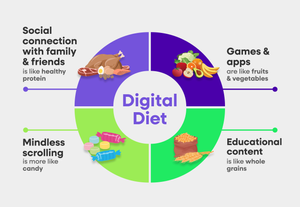
 Copy Link
Copy Link
 Share
to X
Share
to X
 Share
to Facebook
Share
to Facebook
 Share
to LinkedIn
Share
to LinkedIn
 Share
on Email
Share
on Email
